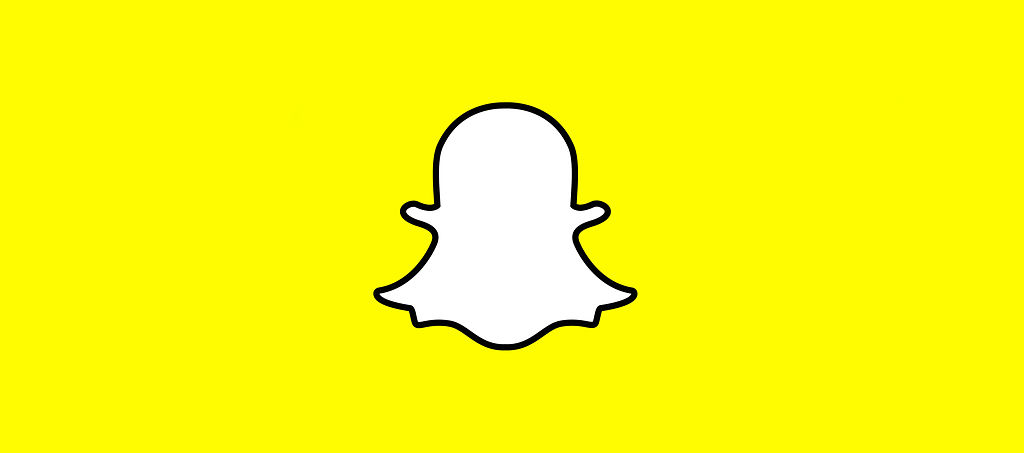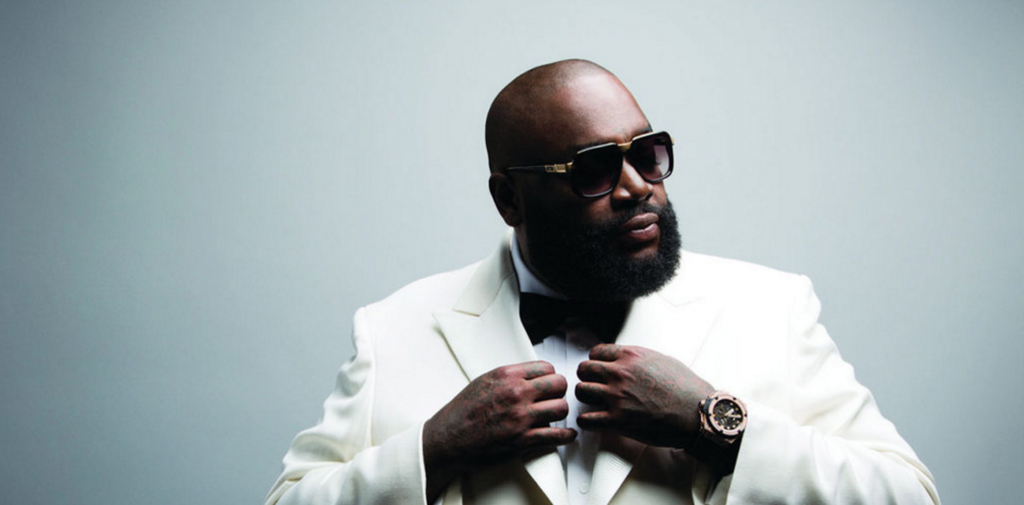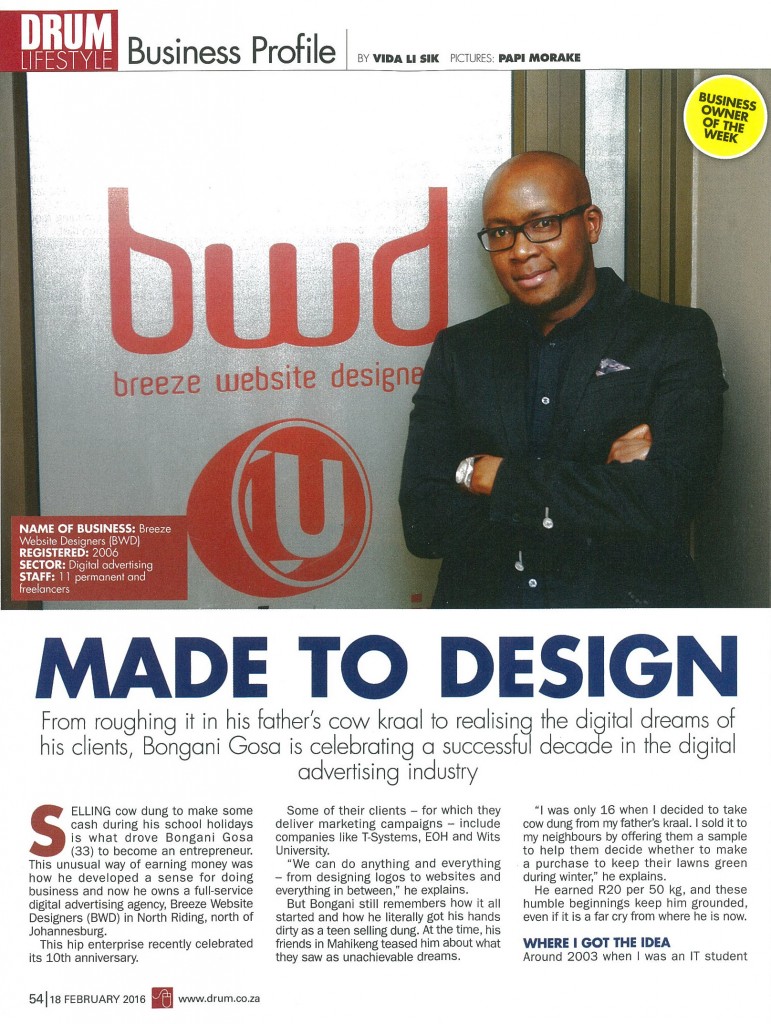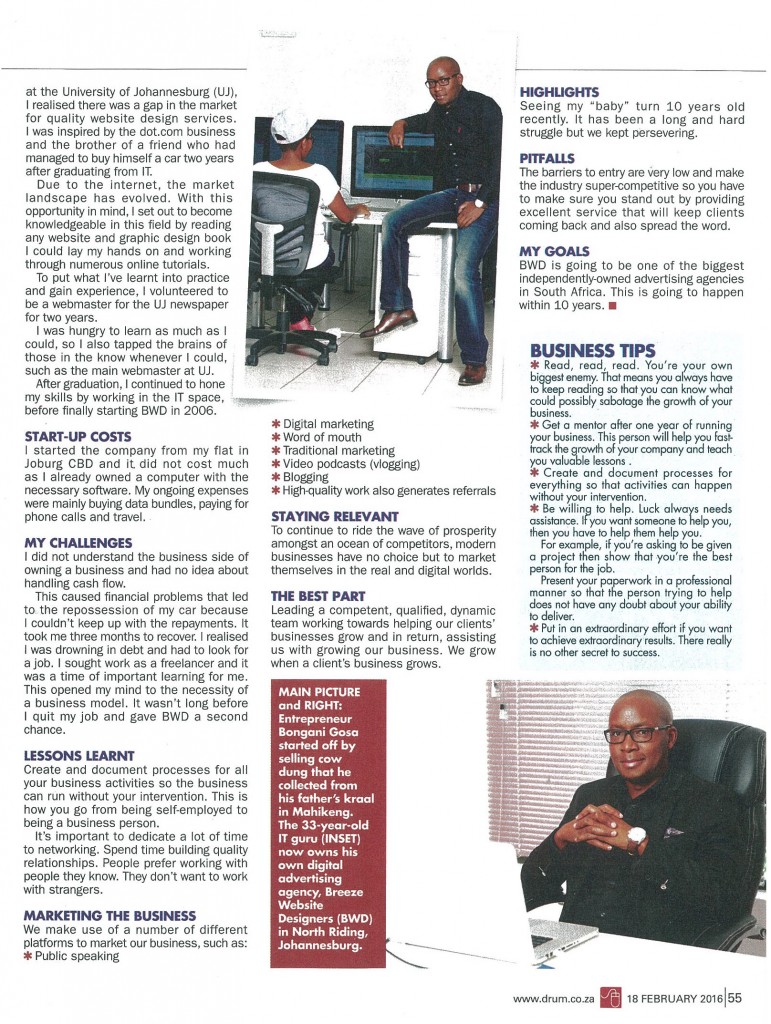Posted at 09:21h
in
Thought Leadership
Did the interview earlier this morning with Dj Mandla and Lungile. We were chatting mainly about digital marketing and tried as much as possible to dissect it within 7 minutes. You’re welcome to have a listen.
DJ Mandla: Thirteen after 8:00. We are chatting to Bongani Gosa, who is owner and creative director for Breeze Website Designers. That’s “BWD.” [inaudible 00:00:11] in this digital space. But we know that a lot of things are happening now on the Internet. In fact, a lot of companies now prefer to advertise [inaudible 00:00:25] Facebook. Remember that whole trend with clothing companies as well?
DJ Lungile: Yeah.
DJ Mandla: [inaudible 00:00:30]. Spree is one of the biggest now.
DJ Lungile: Yeah. No, they’re killing it. They’re killing it.
DJ Mandla: So let’s welcome [inaudible 00:00:34].
Bongani Gosa: [inaudible 00:00:38].
DJ Mandla: [inaudible 00:00:39].
DJ Lungile: [inaudible 00:00:40].
Bongani Gosa: No, I meant to say [inaudible 00:00:42].
DJ Mandla: [inaudible 00:00:44].
DJ Lungile: [inaudible 00:00:44].
DJ Mandla: See, that’s the beauty of working on radio. [inaudible 00:00:50].
Bongani Gosa: [inaudible 00:00:53].
DJ Mandla: No, nice one. Just briefly, [inaudible 00:00:54].
Bongani Gosa: Okay. The company name is Breeze Website Designers, but you must not be misled by the name. It’s actually not a website design company. It’s a digital advertising agency.
DJ Lungile: Okay.
Bongani Gosa: So what we do is that we help companies advertise on the Internet basically. We’ve been around since 2006, so say it’s started off as a website design company, but over time we evolved into a digital agency. And now we’ve evolved into an advertising agency.
DJ Lungile: Okay. So advertising, are you talking traditional advertising? Or is it a mixture of everything? If you are saying you’re an advertising agency, because I understood the digital advertising, and then you said now you have evolved into an advertising agency.
Bongani Gosa: Ah, yes. But maybe we can just maybe…
DJ Mandla: Just break it down.
Bongani Gosa: Or maybe for the sake of our discussion, maybe just…
DJ Lungile: Yeah. Because it is [inaudible 00:01:48]. Okay. I just wanted to clarify that, but it’s fine. And so you do digital advertising. What is that? Because [inaudible 00:01:56] company, or companies and advertising, [inaudible 00:01:58]. What exactly do you do? And how do you boost a company’s mileage, if I should call it that, with what you do?
Bongani Gosa: Okay. In oversimplified terms, digital advertising simply means advertising on the Internet.
DJ Lungile: On the Internet.
Bongani Gosa: Yeah. What we do, I suppose you can maybe call it “content marketing,” which is just a subset of digital marketing. It’s just simply creating content that educates your potential clients about what is it that you do, why should they choose you, and stuff like that.
DJ Lungile: Okay. [inaudible 00:02:39] practical example. Because I think within this digital space there’s just so much jargon, or so much newness to it when it comes to [inaudible 00:02:47]. So if you break it down by example, [inaudible 00:02:51] Fish and Chips. What do you do for me when I come to you as a digital advertising agency?
Bongani Gosa: For [inaudible 00:02:59] Fish and Chips, I suppose the first thing is to create the awareness so that people know that [inaudible 00:03:06] Fish and Chips exists.
DJ Lungile: Okay. Okay.
Bongani Gosa: So the cheapest way would be maybe Facebook, pump a lot of Facebook ads.
DJ Lungile: Yes.
Bongani Gosa: The ads, you will probably need pictures of your [inaudible 00:03:18].
DJ Lungile: Yeah, the branding, the logo, what it looks like, yeah.
Bongani Gosa: Storefront. Yeah. And then after you publish pictures of your shop front, so that’s just the outside. Maybe you want to show people that your shop is clean.
DJ Lungile: Okay.
Bongani Gosa: And maybe take pictures of the back.
DJ Lungile: Yeah. Yeah.
Bongani Gosa: And then maybe you want to show people that…
DJ Lungile: The food I cook.
Bongani Gosa: …yeah, that the food you cook is nice. Maybe you want to also show people that your employees are happy. So you will notice that is content that educates your potential clients about why they should…
DJ Lungile: The business, yeah, yeah.
Bongani Gosa: …work with you. So when we say “digital marketing,” that’s pretty much the [inaudible 00:03:52].
DJ Mandla: Yeah. But I want to go into most, in fact the sophisticated part of that. As when you, what happens normally on the Internet, they say they look at the sites you visit the most and that is how they identify you as a potential client for a particular business. So what’s that system where they align your business? For example, if I surf for tires every now and then, ads that will pop up when I log on would be about tires. Do you guys do that as well?
Bongani Gosa: Yes, we do that. That’s called “pre-targeting.”
DJ Mandla: Yeah.
Bongani Gosa: So it’s just basically placing a cookie on your computer to track what is it that you have been up to, so that you can see targeted ads. That’s why you will notice a lot of times when you log on to, let’s say, Facebook, or maybe Google, or maybe YouTube, you will start thinking that you’re seeing the same ads. But the next person is not seeing the same ads as you, because you guys are looking at different things.
DJ Mandla: Different things every now and then. So that’s the space as well that you explore. [inaudible 00:05:05] who wants to come through to you and maybe just, you know, explain [inaudible 00:05:12] with regards to I’ve got my Facebook. Is there any other platform that you probably explore?
Bongani Gosa: Yes, we work on quite a lot of platforms. I suppose what we tend to do is that we start out by asking you what is it that you are hoping to achieve with this digital marketing thing, because we don’t just want to start posting stuff on Facebook, on Twitter, and stuff like that. You want to say, “Okay, cool. I want to get sales leads. I want to generate brand awareness. I want people to be able to trust me.” So we start with those kind of objectives and then we say, “Okay, cool. Who is your target audience? Where are they? What is the best tool targeting them?” And then we create content around those particular factors.
DJ Mandla: Yeah. Is digital advertising cheaper than your conventional advertising?
Bongani Gosa: Yes, yes, it is. It is way cheaper. And also, the nice thing about it is that you can check where your money went. Unlike conventional advertising that is more of a spray-and-pray approach, but digital is slightly more targeted.
DJ Lungile: Interesting. All right. So people that would like to get hold of you, where do they find you? Where are you guys based? Contact numbers. Of course you are available on the social spaces in [inaudible 00:06:26].
Bongani Gosa: Okay. The company is based in North Riding. Our website is www.BWD.co.za.
DJ Lungile: Okay. Say that a bit slower.
Bongani Gosa: “B” for Breeze.
DJ Lungile: Say it’s “www.B…”
Bongani Gosa: “WD.”
DJ Lungile: BWD.co.za.
Bongani Gosa: .co.za, yes.
DJ Lungile: Okay. Okay.
Bongani Gosa: I’m also on Twitter at BonganiG. And then our phone number is 011-321-0193.
DJ Lungile: All right. But quickly, just before you go, Bongani, how big or how small should my enterprise be? Because one would say, “Esh, maybe this thing is expensive. Why would they come to the radio and talk about these things?” What is, yeah, the scale?
Bongani Gosa: That’s a tricky question!
DJ Lungile: Yeah. I’m asking this because of course we understand the marketing that your working with.
DJ Mandla: [inaudible 00:07:20] digital space.
DJ Lungile: [inaudible 00:07:20] digital space, because…
DJ Mandla: You know? That small, you know?
DJ Lungile: [inaudible 00:07:22]. I’m sure you want to take it out there.
Bongani Gosa: All right. Maybe let me explain it slightly different.
DJ Lungile: Yeah.
Bongani Gosa: If someone, [inaudible 00:07:29], essentially they can do some of the digital marketing themselves. They can’t really come to like and advertising agency.
DJ Lungile: Yeah, yeah.
Bongani Gosa: We will charge them slightly more.
DJ Lungile: Okay.
Bongani Gosa: But if you have, let’s say, a budget of around 20 grand a month, then you can approach a company. Then they can structure some kind of pay cash for you.
DJ Lungile: Mm. Mm.
Bongani Gosa: And then the nice thing about, like I said, about digital marketing is that because you can measure it, after like three or four months, then you can say, “No, this thing’s not working out. I’m cancelling my contract with you guys.”
DJ Lungile: yeah. Yeah, I think that is the best part of digital marketing, that you get a report constantly, whether your campaign is actually working or not working. Unlike putting up a billboard, we never know.
Bongani Gosa: Or sort of, just another quick one. We’re working on the project called [inaudible 00:08:13] Mobile, for a client. So they’re launching an online store for Soweto.
DJ Lungile: Okay.
Bongani Gosa: So you can buy groceries and then they deliver to you.
DJ Mandla: Oh, that’s nice.
Bongani Gosa: The project is going to be launching within four weeks. So people in Soweto are adopting this digital.
DJ Lungile: I can’t wait! [inaudible 00:08:32].
DJ Mandla: [inaudible 00:08:38]. No, it makes you not want to go through that, because it would be nice to just order your grocery [inaudible 00:08:46].
DJ Lungile: [inaudible 00:08:48] not compare prices when I shop now, but it’s [inaudible 00:08:50]. I think we’d truly appreciate it though!
DJ Mandla: No, no, you don’t need to do that. Pick and Pay does that for you.
DJ Lungile: So they say.
DJ Mandla: You take stuff and then you pay.
DJ Lungile: And they pay you.
DJ Mandla: At the end of paying…
DJ Lungile: And they pay you.
DJ Mandla: Yeah, at the end of paying…
DJ Lungile: And they pay you.
DJ Mandla: …it shows you how much money you saved.
DJ Lungile: And they pay you for telling us all of this.
DJ Mandla: No, no, no. But I’m just helping my people, so they understand that they do it for you.
DJ Lungile: Okay.
DJ Mandla: “Price match,” they call it, yeah. So I’ll shop at Pick and Pay through other people, so I don’t have to compare prices!
DJ Lungile: [inaudible 00:09:17].
Bongani Gosa: [inaudible 00:09:24]. Thank you. Thank you. [inaudible 00:09:26]
DJ Mandla: Thank you, my guy.
DJ Lungile: Thank you so much. Have a lovely day.
Bongani Gosa: Thanks, bye.
DJ Mandla: Always the best of luck. Let’s move right along to our music. It’s a Thursday, girls holiday. She calls it just an excuse to get wasted.
DJ Lungile: [inaudible 00:09:39].
DJ Mandla: [inaudible 00:09:40].
DJ Lungile: [inaudible 00:09:46]. Get power.
DJ Mandla: Excuse to get wasted.
DJ Lungile: It is 23 after 8 o’clock. Let’s take a musical break. We come back with Hope for Future.
Announcer: Big Breakfast, every weekday between 6 and 9 a.m. on Jozi FM.



















